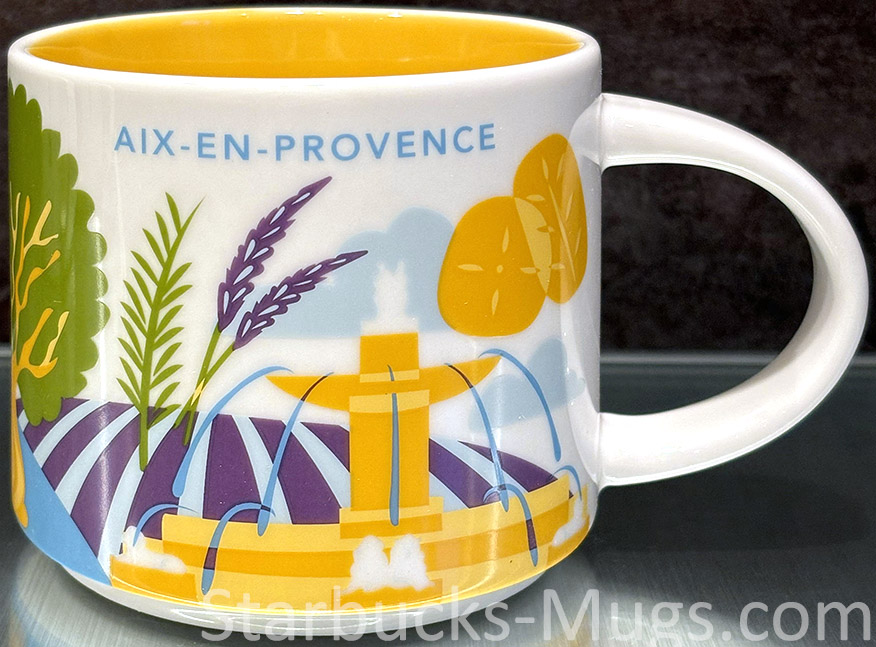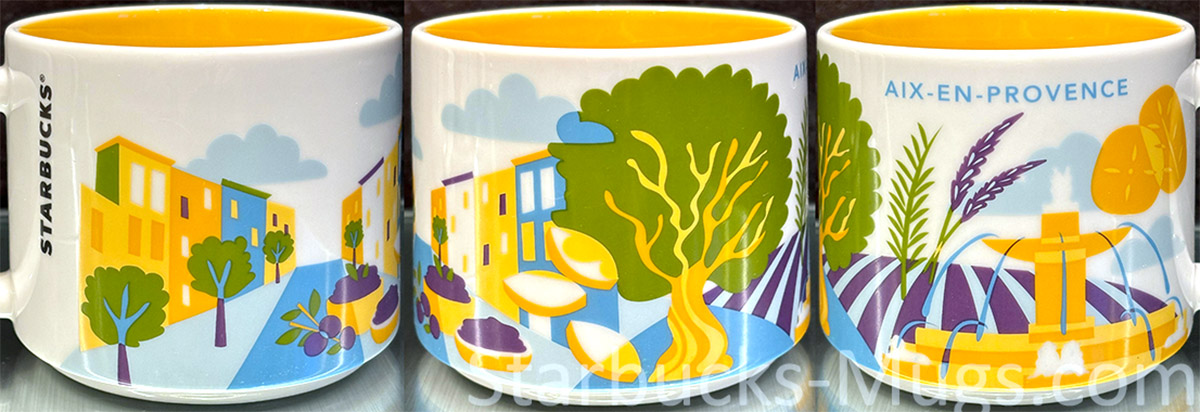
You Are Here – Aix-en-Provence
Here’s the beautiful mug from southern France, You Are Here – Aix-en-Provence. It joins the big family of French releases, with more to come! Stay tuned for further updates.
Aix-en-Provence, often simply referred to as Aix, was founded in 123 BCE by the Roman consul Sextius Calvinus, who named it Aquae Sextiae, meaning “the waters of Sextius,” due to the thermal springs in the area. It became a significant Roman colony and a strategic urban center and spa, serving as a stepping stone between Italy and Spain. During the medieval period, Aix flourished as the capital of Provence under the governance of the counts and dukes of Anjou. It became a center of learning and the arts, with its university, now known as the Universities of Aix-Marseille, being founded in 1409 and recognized by papal bull in 1413. In 1486, Provence was annexed to the French crown, and Aix became the seat of a parliament, further cementing its importance.
The city has seen various rulers and invaders, including the Visigoths, Franks, Lombards, each leaving their mark on its cultural and architectural heritage. Today, Aix-en-Provence is known for its preserved heritage and vibrant cultural scene, blending its historical roots with modern developments.
Some landmarks to visit when in Aix-en-Provence:
– Cours Mirabeau is one of the most famous and picturesque streets in Aix-en-Provence. Lined with plane trees, it is known for its elegant mansions and lively cafes. The street serves as a central hub for social and cultural activities, embodying the vibrant spirit of Aix-en-Provence
– The Fontaine de la Rotonde is a magnificent fountain located at the western end of Cours Mirabeau. Constructed in 1860, it serves as a prominent landmark and meeting point in the city. The fountain features a grand central column adorned with statues representing Justice, Agriculture, Fine Arts, and Law, surrounded by intricately designed basins and water jets, creating a captivating spectacle for visitors.
– The Aix Cathedral, also known as the Cathedral of the Holy Saviour, is a significant religious landmark in the city. It features a mix of architectural styles, including Romanesque, Gothic, and Baroque, reflecting its long history of construction and renovation. The cathedral is renowned for its beautiful cloisters, intricate carvings, and impressive artwork, making it a must-visit for history and art enthusiasts.
– Montagne Sainte-Victoire is a prominent mountain located to the east of Aix-en-Provence, rising to 3,317 ft. It is a symbol of the region and has been immortalized in numerous paintings by the artist Paul Cézanne, who was inspired by its majestic presence. The mountain offers breathtaking views and scenic hikes, making it a popular destination for both locals and tourists.
– The lavender fields of Provence are a breathtaking sight, stretching across the rolling hills in vibrant purple hues from late June to early August. These fragrant fields, particularly prominent in areas like Valensole and Sault, symbolize the natural beauty and agricultural heritage of the region.
Local specialties to try:
– Pompe à l’huile is a traditional Provencal sweet bread, often enjoyed during the Christmas season. Made with olive oil, and orange blossom water, and sometimes flavored with anise or citrus zest, it has a soft, cake-like texture and a rich, fragrant taste. This delicacy, also known as “gibassier,” is an integral part of the “Thirteen Desserts” of Provencal Christmas, symbolizing the region’s culinary heritage and festive traditions.
– Calissons (to the right of the big tree) are traditional Provencal sweets made from a paste of candied fruit and almonds topped with a thin layer of icing. They are a local specialty and symbolize the culinary traditions of Aix-en-Provence.
























































































beautiful mug! It’s so cool they keep on releasing new ones in France, they released one for Haguenau too! They have released a new one for Italy too, Napoli, can’t wait to see the full images in your blog. Best regards!